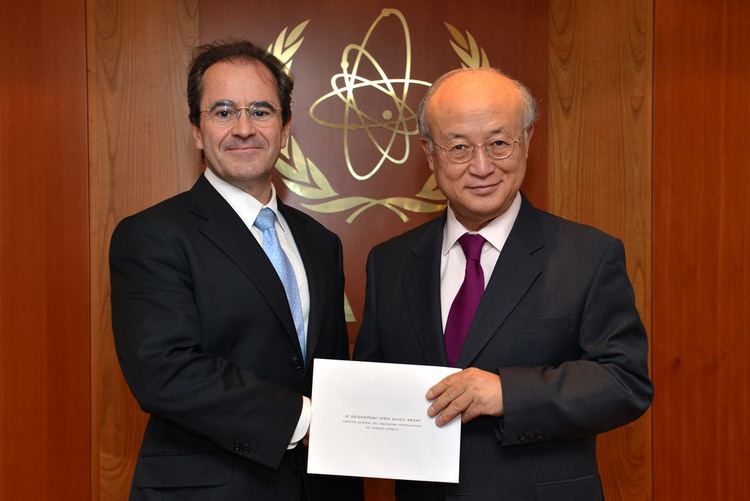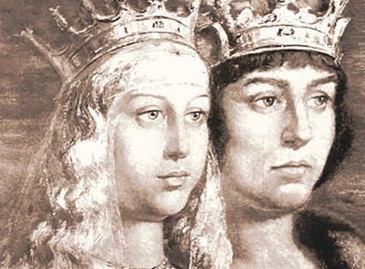Name Gonzalo Salazar | ||
 | ||
People also search for Simon de Colonia | ||
Gonzalo de Salazar (Granada, Spain – c. 1564, New Spain) was an aristocrat, and leader of several councils that governed New Spain while Hernán Cortés was traveling to Honduras, in 1525−26.
Contents
- Early life
- Temporary government in the absence of Corts
- Government of Salazar and Almndez
- Despotism
- Overthrow
- Afterwards
- References

Early life
Gonzalo was the first Christian child baptized in Granada after the conquest against the Moors (1492). Consequently, he was granted titles, special privileges, and at an early age, appointed royal page to the Catholic Monarchs at court in Granada. He fought in the Castilian War of the Communities, opposing the rebels against Emperor Charles V. For this, Charles rewarded him with the position of factor (tax collector), and Captain General (see below) of New Spain from 29 December 1524, until 29 January 1526. Prior to the appointment of a Viceroy in New Spain, Gonzalo had worked, alongside Pedro Almindez Chirino, Alonso de Estrada (who preceded him, and succeeded him—they were on bad terms), and others, and endured power struggles and controversy. Gonzalo's father, Doctor Guadalupe de Salazar, a converso, was royal physician, to the Catholic monarchs, and one of 16 "regidores" (administrators) of Granada during the struggle to oust the Moors. Gonzalo, his wife Catalina, and her brother Antonio De La Cadena Maluenda (treasurer of New Spain), left Spain in 1524, and arrived in Mexico City in 1525. A powerful member of the ruling class in the New World, Gonzalo, became an encomendero (holder of an encomienda) of Tajimaroa (Michoacán), and held lands, and titles elsewhere. His daughter Catalina de Salazar de la Cadena first married Ruy de Mendoza, of the famous Mendoza clan, and subsequently wed Cristobal de Onate. Their son, Juan de Onate, established San Juan de Los Caballeros near present-day Santa Fe, New Mexico in 1598. Gonzalo's son Juan Velazquez de Salazar, inherited his estates. Gonzalo's had a brother named Juan Salazar Velazquez. Gonzalo Salazar's wife, Catarina (aka Catalina) de la Cadena Maluenda, was descended from Mossen Truchas de Calatayud* (*Reference: "El Libro Verde de Aragon"). The assumed the name Maluenda after the town where they lived. They were money lenders to kings, and prominent spice, and silk merchants in Europe for hundreds of years. Pedro de Maluenda was commissary for Hernan Cortez; witnessed the destruction of the Aztec nation, but died of a fever 6 months after the conquest. The Spanish colonial families were inter-related, of Christian, Sephardic (converso), or Jewish descent. The title "Captain General" precedes the appointment of "Viceroy's" by the Spanish kings in the new world.
Temporary government in the absence of Cortés
In 1524 Governor and Captain General Cortés left Mexico City for Honduras. He put the government in charge of Alonso de Estrada, royal treasurer of the colony appointed by Charles, Rodrigo de Albornoz and Licenciado Alonso de Zuazo, with Estrada at the head. The transfer of power occurred October 12, 1524.
When Cortés left Mexico City he was accompanied by Gonzalo de Salazar and Pedro Almíndez Chirino as far as Coatzacoalcos. Salazar and Almíndez used this opportunity to convince the conqueror that they should be included in the government. Cortés sent them back with two decrees. The first decree directed that they join the already-formed government of Estrada, Albornoz and Zuazo as its fourth and fifth members, provided that the two groups could reconcile their differences. The second decree directed that Salazar and Almíndez replace Estrada and Albornoz.
Government of Salazar and Almíndez
When Salazar and Almíndez arrived back in the capital, they suppressed the first of these decrees, and made known only the second one, thus taking over the government. This took place on December 29, 1524. However, they made the mistake of admitting the deception to some friends. This resulted in a scandal, and on February 17, 1525, Estrada and Albornoz were admitted to the government, which now included all five men mentioned by Cortés. In order of importance, these were Salazar (tax collector), Almíndez (inspector), Estrada (treasurer), Albornoz (accountant) and Zuazo (justicia mayor).
The expanded governing council was the work of Zuazo, acting as an arbitrator based on the first decree received from Cortés. The two factions, however, were not really reconciled. Estrada and Albornoz objected to the arrangement. On April 20, 1525, Salazar and Almíndez proclaimed that no officials were to recognize the authority of Estrada and Albornoz, on pain of 100 lashes and confiscation of property. This proclamation was signed by Zuazo, Cervantes, de la Torre, Sotomayor, Rodrigo de Paz (a member of the ayuntamiento, or city government), and the clerk Pérez. Estrada and Albornoz left Mexico City to seek out Cortés and present their case to him.
Despotism
The council continued with three members (Zuazo was still a member) until April 20, 1525. In the middle of the night, Zuazo was arrested in his home and taken under guard to be sent back to Spain. He went as far as Santo Domingo, where he spent the rest of his life, and died in 1527.
Zuazo was a respectable, educated man, a friend of Cortés, and apparently incorruptible. His arrest freed Salazar and Almíndez from all checks on their authority, and they began to govern despotically. They made it known that Cortés (untruthfully) had been killed by Indians. On August 19, 1525 they tried to confiscate his property. They arrested Rodrigo de Paz, whom Cortés had left as majordomo of his property. Paz was tortured to find out the location of Cortés's hidden treasure. He provided some locations, and then was hanged in the plaza.
Salazar sent out agents to extort treasures. When refugees were forced to leave a church, Father Valencia protested the violation of sanctuary by excommunicating Mexico City until the prisoners were restored.
Overthrow
In January 1526 a messenger (Martín de Orantes AKA Dorantes) announced the return of Cortés in Mexico City. Cortes issued a decree replacing Salazar and Almíndez in the governing triumvirate with, Francisco de las Casas, and Pedro de Alvarado. In the absence, or incapacity of Las Casas and Alvarado, Estrada and Albornoz were named as replacements. Salazar and Almindez sought refuge in the Franciscan convent. Polorized, Salazar proponents assembled before Cortes arrived. They consisted of clergymen, friends, servants, family, and some followers, alongside those who wanted to reinstate Estrada. Orantes entered the city in secret and made contact with members of the opposition.
At daybreak on January 28, 1526 two hundred Spaniards rushed the convent. Armed supporters of Salazar, were intent on murdering Estrada, and were ready for a fight. Sadly, Salazar confronted the group alongside other noblemen, and relented. Cortes supporters had succeeded in getting the ayuntamiento to execute the orders of Cortes. The former opposition group left the convent and marched along the streets shouting "Viva Cortés". They then assembled to the left of the convent. Salazar was arrested and caged in public display in the Zocalo, that same day. Almindez was also arrested in Tlaxcala and brought back to the city. With De Las Casas and Alvarado absent, Estrada and Albornoz governed from January 29, 1526 to June 24, of that same year, or just short of six months. Thereafter, Cortes returned briefly to his post on June 25, Salazar and Almindez did not. Salazar was freed after a few months, exiled to Spain, and banned from returning to New Spain.
Afterwards
Salazar and Almíndez escaped the fate of many of their enemies because of their royal connections. Salazar escaped execution due to his status. In June a new administration was formed.
Despite the court intrigue, and plots, Salazar returned to the Spanish court, was reappointed, and returned to New Spain in 1540. He completed his position as factor in New Spain without issue. Salazar behaved as if nothing had happened. Dubbed "el gordo" behind his back, he was overly courteous and courtly. A sinister persona, he left politics thereafter, and lived comfortably until his death probably in 1564.
